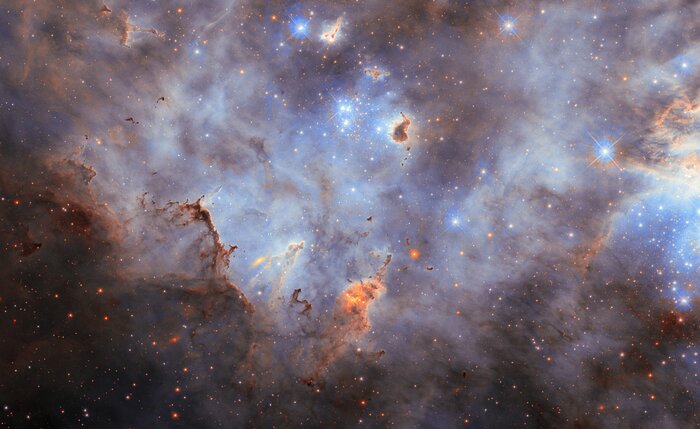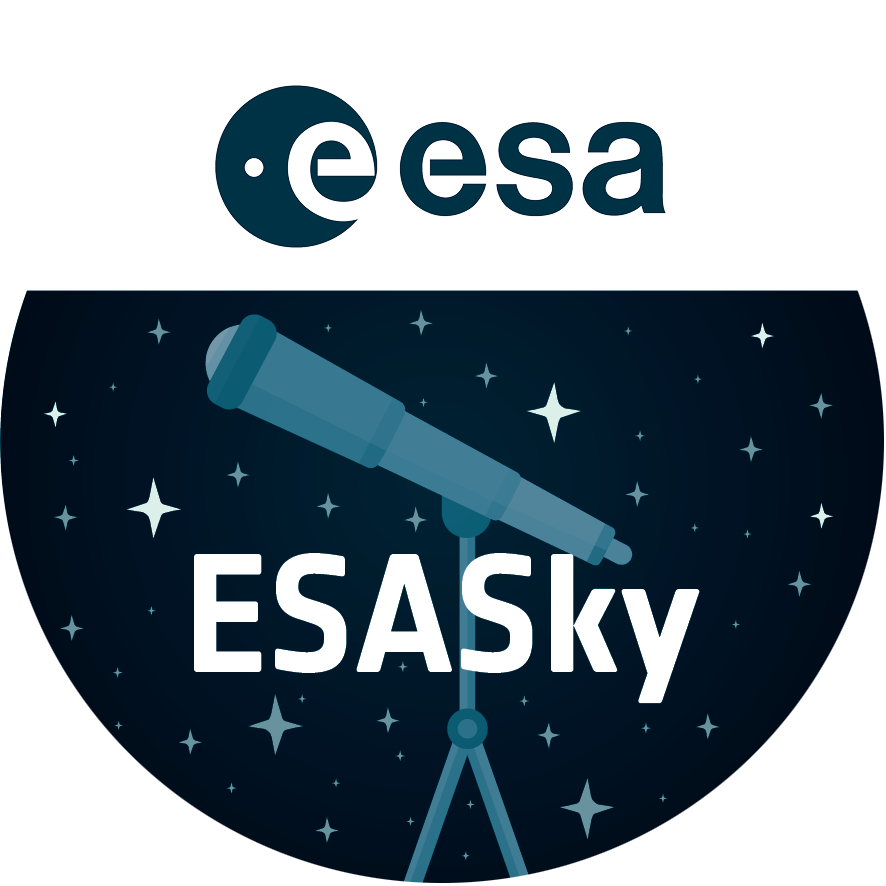Cloudy cluster
This new NASA/ESA Hubble Space Telescope Picture of the Week features a cloudy starscape from an impressive star cluster. This scene is located in the Large Magellanic Cloud, a dwarf galaxy situated about 160 000 light-years away in the constellations Dorado and Mensa. With a mass equal to 10–20% of the mass of the Milky Way, the Large Magellanic Cloud is the largest of the dozens of small galaxies that orbit our galaxy.
The Large Magellanic Cloud is home to several massive stellar nurseries where gas clouds, like those strewn across this image, coalesce into new stars. Today’s image depicts a portion of the galaxy’s second-largest star-forming region, which is called N11. (The most massive and prolific star-forming region in the Large Magellanic Cloud, the Tarantula Nebula, is a frequent target for Hubble.) We see bright, young stars lighting up the gas clouds and sculpting clumps of dust with powerful ultraviolet radiation.
This image marries observations made roughly 20 years apart, a testament to Hubble’s longevity. The first set of observations, which were carried out in 2002–2003, capitalised on the exquisite sensitivity and resolution of the then-newly-installed Advanced Camera for Surveys. Astronomers turned Hubble toward the N11 star cluster to do something that had never been done before at the time: catalogue all the stars in a young cluster with masses between 10% of the Sun’s mass and 100 times the Sun’s mass.
The second set of observations came from Hubble’s newest camera, the Wide Field Camera 3. These images focused on the dusty clouds that suffuse the cluster, bringing a new perspective on cosmic dust.
[Image Description: Stars in a star cluster shine brightly blue, with four-pointed spikes radiating from them. The centre shows a small, crowded group of stars while a larger group lies out of view on the left. The nebula is mostly thick, smoky clouds of gas, lit up in blue tones by the stars. Clumps of dust hover before and around the stars; they are mostly dark, but lit around their edges where the starlight erodes them.]
Links
Credit:ESA/Hubble & NASA, C. Murray, J. Maíz Apellániz
About the Image
| Id: | potw2536a |
|---|---|
| Type: | Observation |
| Release date: | 8 September 2025, 06:00 |
| Size: | 2831 x 1735 px |
About the Object
| Name: | LMC N44C |
|---|---|
| Distance: | 160000 light years |
| Constellation: | Dorado |
| Category: | Nebulae |
Classic Wallpapers
Coordinates
| Position (RA): | 4 56 58.05 |
|---|---|
| Position (Dec): | -66° 24' 57.44" |
| Field of view: | 2.22 x 1.36 arcminutes |
| Orientation: | North is 12.9° right of vertical |
Colours & filters
| Band | Wavelength | Telescope |
|---|---|---|
| Optical g | 475 nm |
Hubble Space Telescope
WFC3 |
| Optical B | 435 nm |
Hubble Space Telescope
ACS |
| Optical g | 475 nm |
Hubble Space Telescope
WFC3 |
| Optical I | 814 nm |
Hubble Space Telescope
WFC3 |
| Optical I | 814 nm |
Hubble Space Telescope
WFC3 |


